Research Results
Harmonious existence between humans and artificial technology
Proposal of a new social systemFY2020
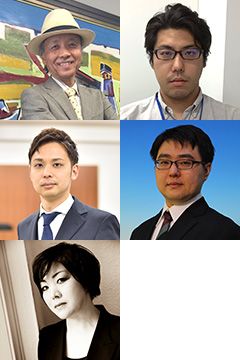
*This work was the result of collaboration beyond the framework of PJ in the research and development of a “Human-Information Technology Ecosystem” by RISTEX.
- ASADA Minoru(Principal Investigator/ Specially Appointed Professor, Institute for Open and Transdisciplinary Research Initiatives, Osaka University)
- KAWAI Yuji(Group Leader/ Specially Appointed Associate Professor, Institute for Open and Transdisciplinary Research Initiatives, Osaka University)
- INATANI Tatsuhiko(Group Leader/ Associate Professor, Graduate School of Law, Kyoto University)
- RISTEX
- Human-Information Technology Ecosystem “Legal being: electronic personhoods of artificial intelligence and robots in NAJIMI society, based on a reconsideration of the concept of autonomy”(2017-2020)
- MATSUURA Kazuya(Principal Investigator/ Associate Professor, Faculty of Letters, Toyo University)
- RISTEX
- Human-Information Technology Ecosystem “Consideration on the concept of "responsibility" between autonomous machines and citizenries”(2017-2020)
- YOSHIDA Takako(Principal Investigator/ Associate Professor, School of Engineering, Tokyo Institute of Technology)
- RISTEX
- Human-Information Technology Ecosystem “Which controls which? Sense of agency when humans and semi-automated systems co-operate”(2017-2020)
Collaboration between researchers in scientific technology and humanities to tackle important topics in the age of AI
In recent years, artificial intelligence (AI) has made dramatic progress. Specifically, competition in the development of autonomous vehicles for use with AI is increasing. In the medical field, AI diagnostics that detects malignant tumors, which cannot be visually detected by physicians, is being developed using image recognition technology. In addition, AI is being utilized in many fields as we are about to welcome a full-scale age of AI.
On the other hand, we are facing a major challenge in terms of “who would be responsible if AI were to cause an accident.” Presently, there are heated discussions around the world, yet there is no sign of a solution.
In light of this, the “Human-Information Technology Ecosystem (HITE),” one of the research and development areas of the Research Institute of Science and Technology for Society (RISTEX), has proposed a “NAJIMI (familiar) society,” in which humans and AI coexist in harmony. Since this topic involves not only sciences and technologies such as engineering and information science, but also social sciences and humanities such as law, the legal system, ethics, and philosophy, HITE tackles this topic through collaboration between experts in robotics, such as specially appointed professor Dr. Asada Minoru and specially appointed associate professor Dr. Kawai Yuji, associate professor Dr. Inatani Tatsuhiko, who is an expert in law, associate professor Dr. Yoshida Takako, who is an expert in neuroscience and psychology, and associate professor Dr. Matsuura Kazuya, who is an expert in philosophy. This is a major feature of HITE.
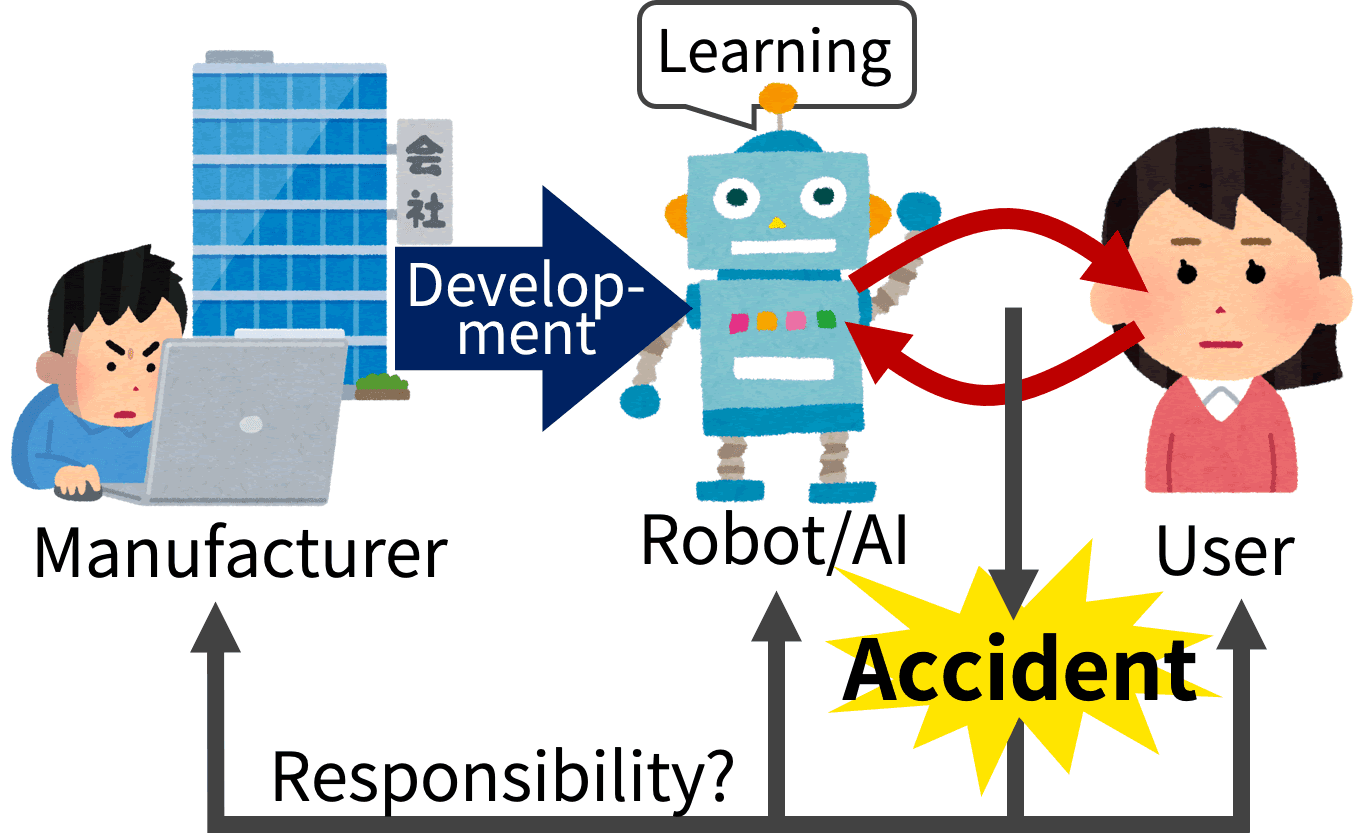
Figure 1. When there is an accident during interaction between a robot/AI and humans, is responsibility held by the manufacturer or the user?
As the boundaries between humans and machines have become unclear, considerations regarding the "subject" and "responsibility" present a challenge
While there are areas where AI surpasses humanity in terms of speed and judgment details, the judgement of AI may not always be 100% accurate. In addition, incidents that are simple for humans to judge may be difficult for AI to judge. However, misjudgment during self-driving and serious misdiagnosis in image diagnosis can put people’s lives at risk. Furthermore, when AI and humans move together, it is difficult to draw a line where the judgement of AI ends. For example, a robot suit that is worn to support movements involves the user of such a suit in its operation; thus, when there is an accident, it is difficult to determine if it was a mistake on account of the wearer or the AI.
As such, as the boundary between humans and machines becomes unclear, the important question is how we view the “subject” and “responsibility” in terms of who committed a certain act. If it is an accident caused by an incorrect determination or operational error made by a human, the person can be criminally prosecuted. However, under current criminal law, it is assumed that each person makes a determination based on their own free will and takes action; i.e., “a human with free will” is assumed. This assumes “control of a complete object (a machine with built-in AI) by a subject with complete free will (human).” As AI and neuroscience rapidly develop; for example, some argue that it is time to fundamentally review the notion that humans truly have free will, and there is a need to review the criminal law.
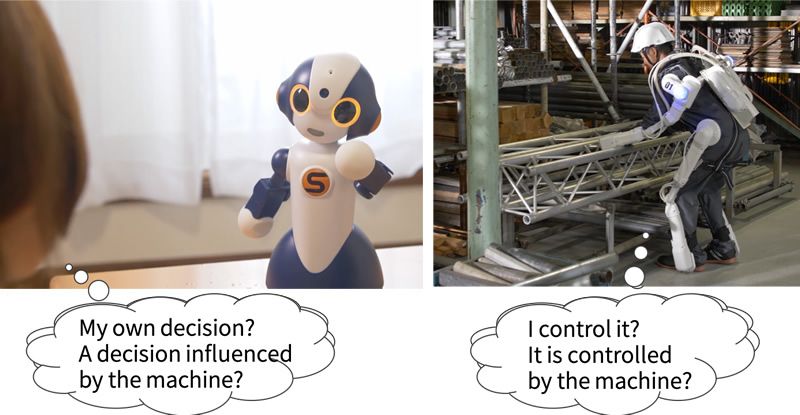
Figure 2. Joint decision-making with the communication robot (left). Joint control with the power support robot suite (right). Who/what is the subject? The human or the machine?
Proposal of a “NAJIMI society” wherein humans and AI coexist
To address this challenge, HITE has robotics engineers, jurists, neuroscientists, and philosophers working together to explore the new era ethics and legal system and propose a “NAJIMI society.” A NAJIMI society refers to a symbiotic society in which humans and machines with built-in AI cooperate and trust each other as equal partners instead of one using the other.
First, researchers in the field of science and technology, Dr. Asada and Dr. Kawai, discussed the different levels of autonomy for AI and measured the interaction of the same with humans. They verified impressions and the sense of responsibility that people feel when they interact with machines with built-in AI. Meanwhile, the law research group led by Dr. Inatani is studying a criminal justice system that suits the characteristics of AI in such a NAJIMI society.
With the cooperation of experts in neuroscience and psychology Dr. Yoshida, who is developing machines and systems that work with humans, and expert in philosophy Dr. Matsuura, we aim to design a legal system that considers the emotions of accident victims and enjoys widespread social acceptance.
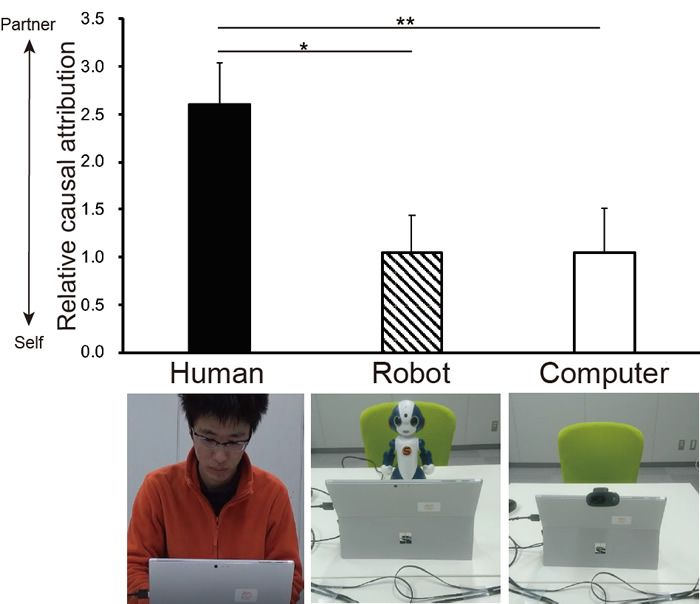
Figure 3. An experiment on whether the subject assumes the fault or blames the robot for a failure and damage in a game with an artificial system (Miyake et al., 2019).
Aiming toward a new society wherein each person’s desire — “I want to live with AI in this manner” —can be achieved
In the future, machines equipped with AI are expected to penetrate our lives even further. At HITE, we search for ethics and legal systems for a new generation as we actively educate the general public. Specifically, we continue our discussions on “how society should be” and “what we want the society to be.” In order to propose a NAJIMI society in which each person’s desire — “I want to live with AI in this manner” — can be achieved, we plan to gather public comments through awareness and reflect said comments in our work.
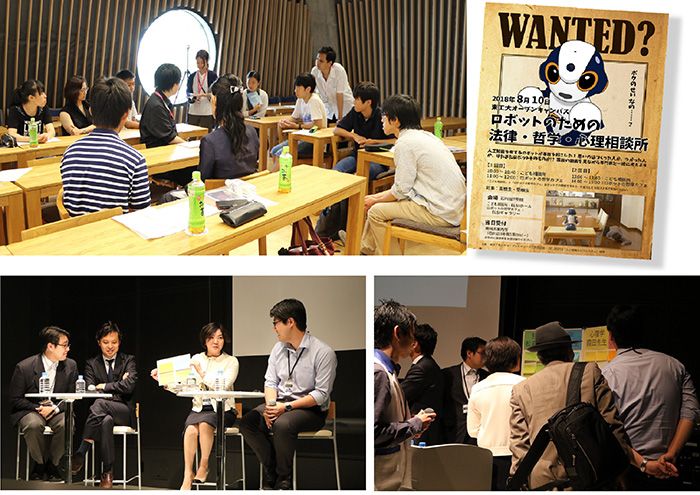
Figure 4. Through awareness activities with general public, we collected comments from the public, which were reflected in our plan. We aim to build a new “NAJIMI society” wherein humans and machines equipped with AI can coexist. (Workshops held at Tokyo Institute of Technology (above) and Miraikan – The National Museum of Emerging Science and Innovation (bottom)).
